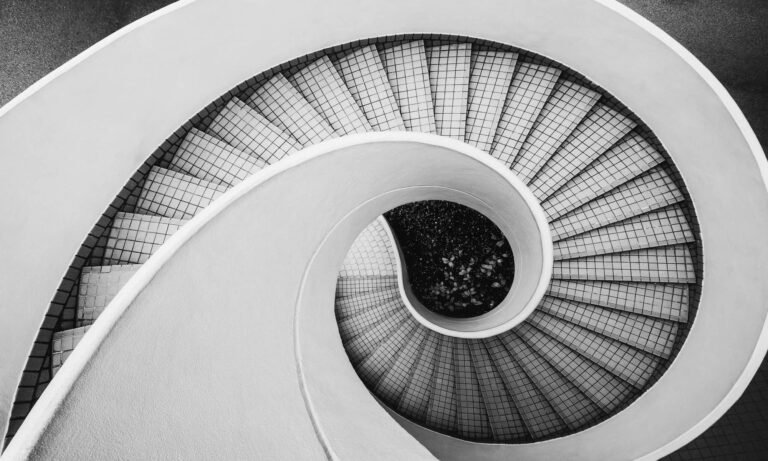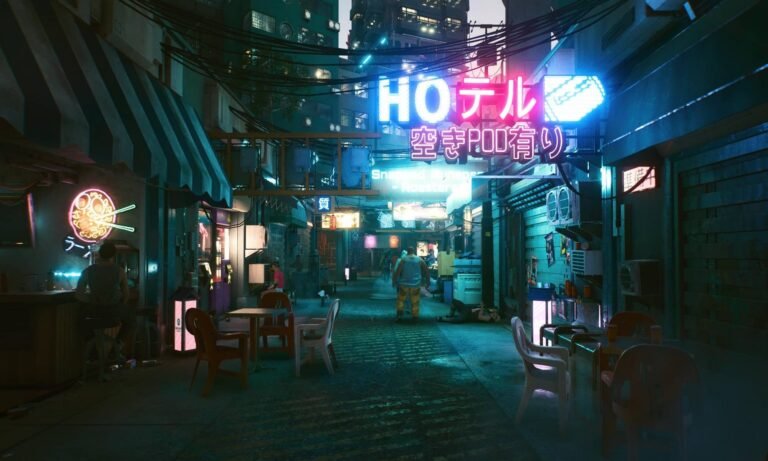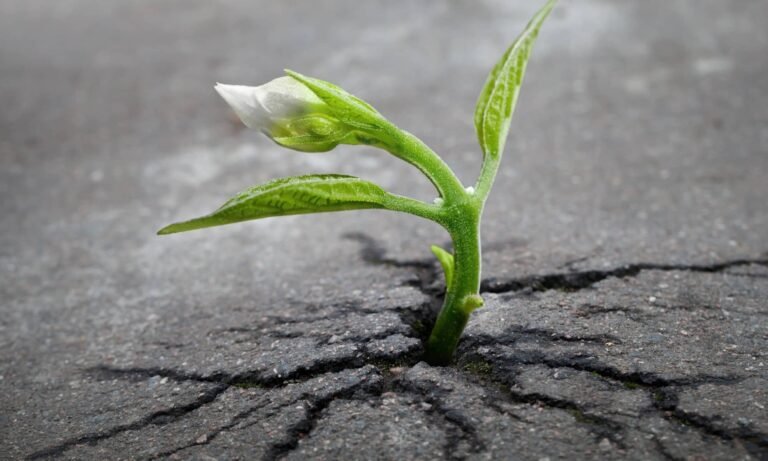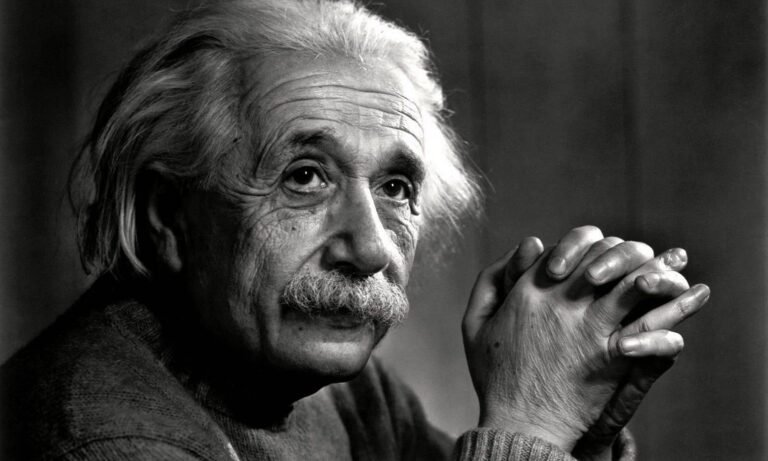Public sculptures are outdoor artistic creations accessible to everyone, serving as symbols of culture, history, and community identity. Rooted in ancient civilizations, they honored gods, events, or figures. Over time, their role evolved, reflecting societal values and artistic trends. The Renaissance brought individualistic expressions, while modern times introduced new materials and technologies. Public sculptures enhance spaces, encourage social interaction, and foster civic pride, creating a sense of place and belonging. They are essential in shaping the cultural landscape of our everyday environments.
Public sculptures enhance urban environments by transforming spaces into visually engaging areas, promoting social interaction, and fostering community identity. They serve as communal landmarks, encouraging conversations and connections among diverse groups. In urban regeneration, sculptures revitalize declining areas, attract foot traffic, and stimulate local economies. Effective integration into urban planning requires collaboration among artists, city planners, and community stakeholders, ensuring that the art reflects community values and aspirations. Public sculptures enrich urban life, both aesthetically and socially.
Types and Their Significance
Public sculptures come in various forms, each with unique meanings and purposes. Traditional sculptures, often statues made from bronze, stone, or marble, commemorate historical figures or events, linking communities to their past. For example, the statue of General Grant in New York’s Grand Army Plaza honors a key figure in American history.
Modern installations, like “The Gates” by Christo and Jeanne-Claude, use unconventional materials and techniques to push artistic boundaries and evoke dialogue about contemporary issues. Interactive art pieces, such as Chicago’s “The Bean,” invite viewer participation, promoting inclusivity and community involvement.
Overall, public sculptures reflect societal values, historical narratives, and cultural diversity, shaping the identity of a place and highlighting the impact of art in everyday spaces.
Public Sculptures from all over the World












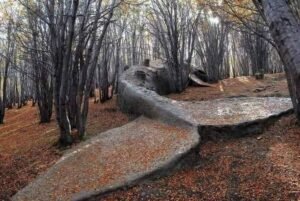

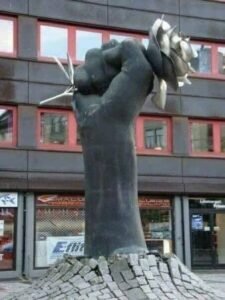


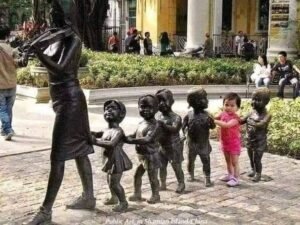
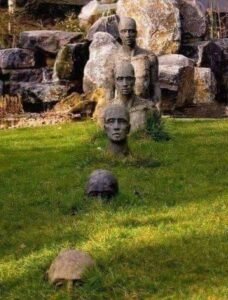
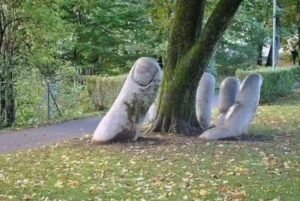





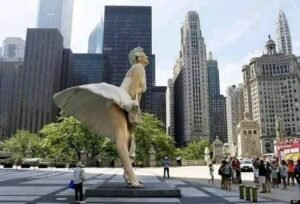


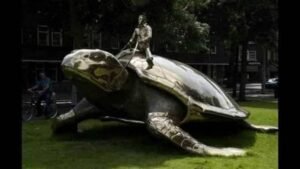

“What sculpture is to a block of marble, education is to a human soul.”
– Joseph Addison
Challenges and Controversies
Public sculptures are an integral part of urban landscapes, enriching the cultural fabric of communities. However, they are often encumbered by a series of challenges and controversies that must be navigated carefully. One significant issue involves funding. With budget constraints affecting public art projects, artists and local governments often struggle to secure adequate financial resources for creation, installation, and ongoing maintenance. This dilemma can lead to a reliance on private donations or sponsorships, which may inadvertently influence the artistic direction and community representation of the sculptures.
Maintenance and preservation pose additional challenges. Outdoor sculptures face the inevitable wear and tear from environmental factors such as weather, pollution, and vandalism. Local authorities may lack the funding or expertise needed to maintain these works effectively, risking their deterioration over time. The questions surrounding the longevity and how to care for such art forms highlight the importance of planning for preservation as an integral part of the public art project lifecycle.
The debates on representation in public art have also intensified, particularly in discussions surrounding inclusivity and historical context. Community sentiment often plays a critical role in determining which figures are commemorated and how they are depicted. Controversies related to historical figures, whose actions may now be viewed negatively, challenge communities to reconsider the appropriateness of certain sculptures. Such discussions have led to the reevaluation or removal of contested artworks, igniting national conversations about historical accountability and the values that public art should embody. Recently, sculptures that once stood proudly have been dismantled or relocated, as communities grapple with the narratives surrounding them and strive to foster inclusivity.
Through these ongoing dialogues and challenges, communities are learning to navigate the complexities of public sculptures. This dialogue encourages collaboration and can ultimately lead to the creation of public art that resonates with a broader spectrum of society, ensuring that the art reflects shared values and collective history.
Cloud Gate aka The Bean
Cloud Gate, commonly known as “The Bean,” is a famous public sculpture in Chicago’s Millennium Park. Designed by British-Indian artist Anish Kapoor, the sculpture was unveiled in 2004 and has since become one of Chicago’s most iconic landmarks.
Design And Structure
- Form and Appearance
- Cloud Gate is a seamless, highly polished stainless steel sculpture that resembles a giant, liquid mercury drop or a bean, hence its nickname “The Bean.”
- The sculpture measures 33 feet high, 42 feet wide, and 66 feet long, and weighs around 110 tons.
- Surface and Reflection
- The reflective surface of Cloud Gate creates a unique visual experience, distorting and reflecting the Chicago skyline, surrounding park, and visitors in fascinating ways.
- The curvature of the surface provides a variety of perspectives, with the reflections changing as people move around and under the sculpture.
- Construction
- The sculpture was constructed using 168 stainless steel plates, which were welded together and then polished to remove any visible seams.
- The design and construction presented significant engineering challenges, including the need for a seamless surface and the support structure to hold the massive sculpture in place.
Significance And Impact
- Artistic Vision
- Anish Kapoor’s vision for Cloud Gate was to create a “gate” that interacts with the surrounding environment and people, blurring the boundaries between the sculpture and its setting.
- The reflective surface invites viewers to see the world from a new perspective, fostering interaction and engagement.
- Cultural Landmark
- Cloud Gate has become a beloved symbol of Chicago, attracting millions of visitors each year.
- It serves as a popular site for photographs, social gatherings, and cultural events.
- Tourist Attraction
- The sculpture is one of Chicago’s top tourist attractions, drawing visitors from around the world.
- Its central location in Millennium Park makes it easily accessible and a must-see for those exploring the city.
Visitor Experience
- Interactivity
- Visitors can walk around and under Cloud Gate, experiencing the shifting reflections from different angles.
- The “omphalos,” a concave chamber beneath the sculpture, creates unique reflections and acoustic effects, adding to the interactive experience.
- Seasonal Views
- The appearance of Cloud Gate changes with the seasons, reflecting snowy landscapes in winter, blooming gardens in spring, sunny skies in summer, and vibrant foliage in autumn.
- Photographic Opportunities
- The sculpture’s reflective surface makes it a popular subject for photography, offering endless possibilities for creative shots.
- It has become an iconic backdrop for selfies and group photos.
Preservation And Maintenance
- Cleaning
- Maintaining the pristine surface of Cloud Gate requires regular cleaning. It is cleaned twice daily to remove fingerprints and smudges.
- Annual maintenance involves a more thorough cleaning and inspection to ensure the sculpture remains in excellent condition.
- Public Interaction
- Despite being a public artwork that invites touch and interaction, the sculpture’s maintenance team ensures it remains as seamless and reflective as the day it was unveiled.
Anish Kapoor
Anish Kapoor is a renowned British-Indian sculptor celebrated for his innovative and often monumental works that explore themes of perception, space, and the nature of materials. Here’s a detailed look at his life, artistic career, and notable works:
- Birth: Anish Kapoor was born on March 12, 1954, in Mumbai, India, to a Hindu father and a Jewish mother.
- Education: Kapoor moved to London in the early 1970s to study art. He attended Hornsey College of Art (1973–1977) and later the Chelsea School of Art and Design (1977–1978).
- Turner Prize: Kapoor won the prestigious Turner Prize in 1991, a recognition of his contributions to contemporary art.
- Knighthood: He was knighted in 2013 for his services to visual arts.
- Praemium Imperiale: Awarded by the Japan Art Association in 2011, often considered the Nobel Prize of the art world.
- Philanthropy: Kapoor is known for his philanthropic efforts, including donations to various cultural and social causes.
Kapoor’s Work
Kapoor’s work is characterized by a fascination with space, voids, and the perception of objects. His use of materials ranges from traditional stone and metal to more experimental mediums like pigment and wax.
- Color and Pigment: Kapoor gained early recognition with his pigment sculptures in the late 1970s and early 1980s. These works featured piles of brightly colored powders applied to simple geometric forms, creating a sense of otherworldly presence.
- Material Innovations: Kapoor has patented a new form of blackest black pigment called Vantablack, which absorbs 99.965% of visible light. This material has sparked controversy and discussions about the ethics of exclusive artistic rights to certain materials.
- Void and Reflection: A recurring theme in Kapoor’s work is the void, explored through concave and convex shapes that play with perception and create illusions of depth and space. Reflective surfaces, such as polished stainless steel, are used to engage viewers in the act of seeing and being seen, challenging their perceptions of reality.
- Monumental Scale: Many of Kapoor’s works are large-scale installations and public sculptures, which often become iconic landmarks in their locations.

Notable Works
- Cloud Gate (2004)
- “The Bean” is one of Kapoor’s most famous works. Its seamless, polished surface reflects the city skyline and park surroundings.
- Sky Mirror (2001)
- A series of large, concave mirrors installed in various locations, including New York and Nottingham. These mirrors reflect the sky and the environment, creating dynamic and ever-changing images.
- Leviathan (2011)
- A massive, inflatable structure installed at the Grand Palais in Paris for the annual Monumenta exhibition. The work invited viewers to enter and experience its vast interior space, evoking the sense of being inside a living creature.
- Descent into Limbo (1992)
- A work featuring a cube-shaped building with a dark void in the floor. The void appears bottomless, challenging viewers’ perceptions of depth and space.
- Marsyas (2002)
- Installed in the Turbine Hall of the Tate Modern in London, this colossal sculpture consisted of three steel rings connected by a single span of red PVC, creating a powerful, immersive experience.
“You have to let the viewers come away with their own conclusions. If you dictate what they should think, you’ve lost it.”
– Maya Lin
What’s More
The posts in My Blog explore reflective and narrative-driven themes, often tied to personal experiences or societal observations, emphasizing storytelling and commentary.
Dependence (10) Fiction (10) Karma (10) Landmarks (10) Paramount (10) Spectrum (10) Spotlight (10) Take Off (10) Terra Shapes (10) Trepidation (10) Unique (10) Virtue (10)
Selecting an option will take you to that post.
(120)
The topics in My Interests examine broad, conceptual, and philosophical ideas, emphasizing exploration of abstract notions and their deeper cultural and societal implications.
Amazing Stuff (10) Beyond Known (10) Controversial (10) Digital World (10) Inequities (10) Innovative (10) Metaphysics (10) Orbiting Entities (10) Our Society (10) Outer Space (10) Value Creation (12) Yearnings (10)
Selecting an option will take you to that post.
(122)
Curious to dive deeper and ready to share your thoughts on all of this? Join the conversation and be part of the Site Forum. Your online discussion board providing space for engaging exchanges on specific topics and shared interests across this website.




